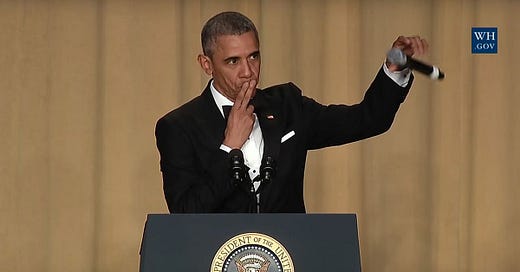Become a Top 1% Candidate: My Behavioral Interview Playbook (Part 1)
The 3W framework to crush "Tell me about yourself"
I’ll be honest—I used to think behavioral interviews were stupid.
I mean, who can’t whip up a story and sprinkle some fluff on top, right?

But I was wrong.
The way you present yourself, the way your eyes light up when you talk, and the way you communicate your experiences—these are things you can’t fake. And trust me, after sitting on the interviewer’s side of the table, I can tell you they can sniff out BS from a mile away.
What’s more, the behavioral interview often happens with the hiring manager, and it can hold more weight than you think when it comes to landing the offer.
I saw this firsthand in my last behavioral interview.
The conversation flowed so well that I convinced the hiring manager to bring me on at a higher level than they originally planned.
That’s the magic of a standout behavioral interview.
In this article, I’ll walk you through:
The two types of behavioral questions
What “why” questions are really asking
The key to nailing every “why” question
How to craft a top 1% answer to “Tell me about yourself”
1. Two types of behavioral questions
The “why” questions: Why should we hire you?
Tell me about yourself
Walk me through your resume
Why do you want to work for us?
What’s your motivation for a job change?
The story questions: How do you work?
Tell me about a time when…
What are your strengths vs. weaknesses?
In this two-part series, we’ll kick things off by focusing on the “why” questions, and specifically, “Tell me about yourself.”
2. What “why” questions are really digging for
Let’s step into the shoes of a hiring manager for a moment.
The big question they’re wrestling with during your interview:
Why should we hire you?
In other words,
If we bring you on board today, can you hit the ground running and start delivering results right away?
Picture this: You’re hiring someone for a big job. You want someone who can take the reins, so you can focus on other things—like enjoying that dream vacation in Cancun, sipping piña coladas while your new hire is back at the office, crunching numbers and delivering results without a hitch.

That’s the kind of candidate hiring managers dream about.
So, how do you make it crystal clear that you’re the one?
Let’s break it down. 👇
3. Seal the deal: Nail every “why” question with one simple trick
Companies don’t care about what you can do; they care about what you can do for them.
So, when you answer, focus on one thing: What’s in it for them? (WIIFT).
Don’t assume your interviewers will connect the dots themselves. They’re not treasure hunters searching for hidden gems in your story. Imagine them as weary travelers - after all, they’ve just had four back-to-backs without a bathroom break.
That means, if you cloak your story in mystery, you’re setting yourself up for a guaranteed snoozefest.
Instead, make your value pop like fireworks on the Fourth of July.
Here’s the secret:
At the end of every answer, bring it back to why you’re the perfect fit for the role, the team, and the company.
This will be your mic-drop moment.
4. Let’s answer “Tell me about yourself”
Pause for a second and think: how would you answer this question?
Maybe something like this:
“I’m a data scientist working in social media. I’m experienced with exploratory analysis, AB testing, and predictive models. I’ve led projects end-to-end, from defining the problem and establishing success metrics to communicating recommendations to stakeholders. The languages I use are SQL and Python.”
Not bad, right?
It’s a solid response—straightforward, hits the key points, and answers the question literally.
But, it’s not a top 1%, knock-their-socks-off answer.
Why? Because it’s selfish.
It’s all about you. It’s focused on what you’ve done and what you know, without linking it to what the company needs.
To move from “meh” to “must-hire”, you need to shift your perspective - make it about them as much as it is about you.
We are smarter techies. Let’s take this to the next level and craft a top 1% answer using the 3W framework: Who, What, and Why ⬇️





